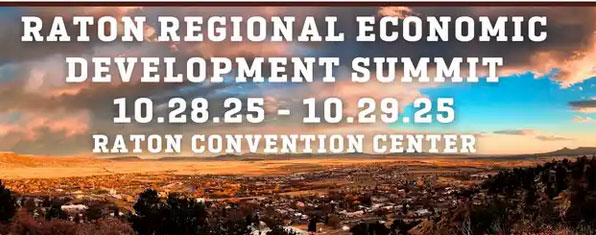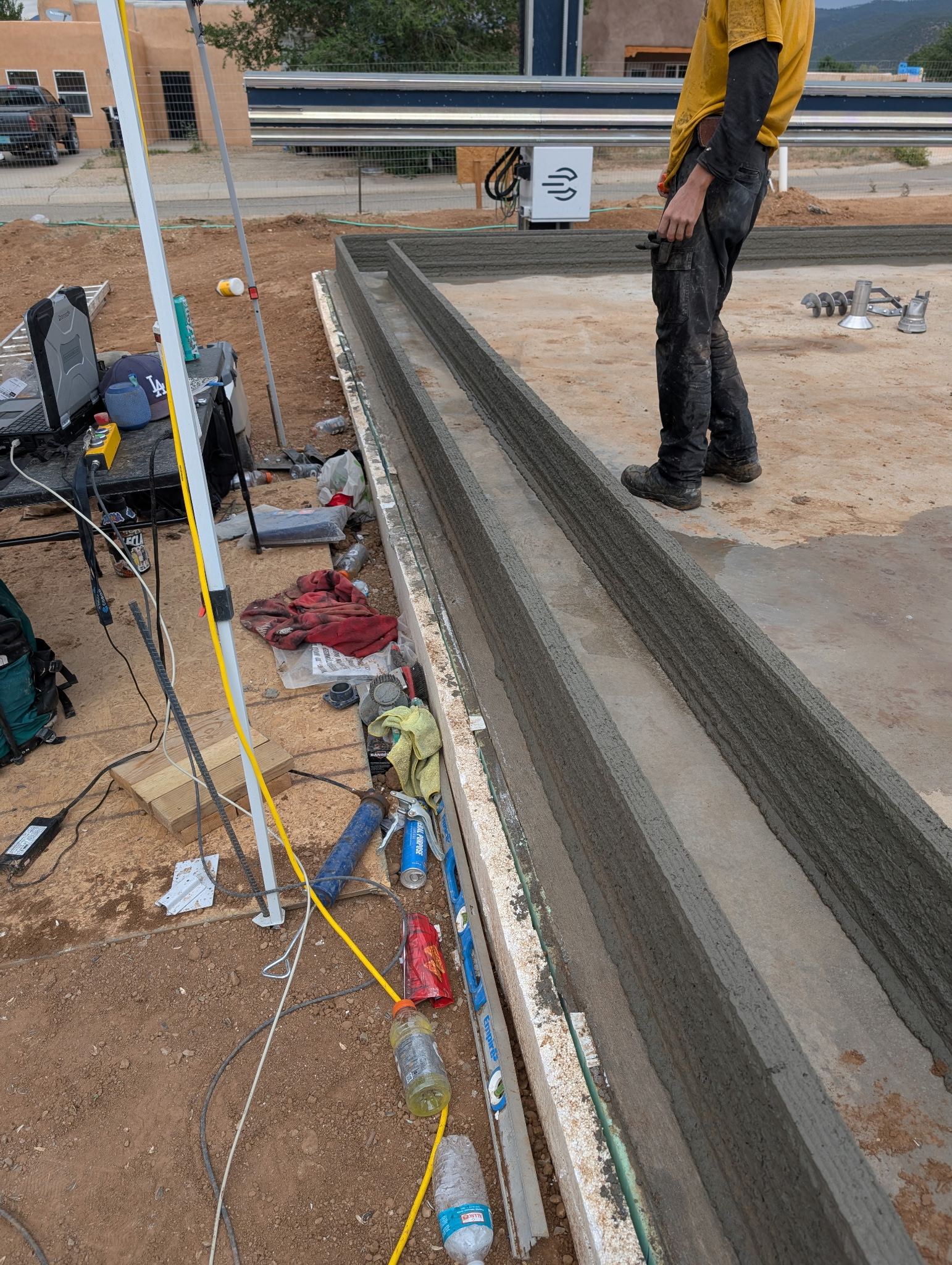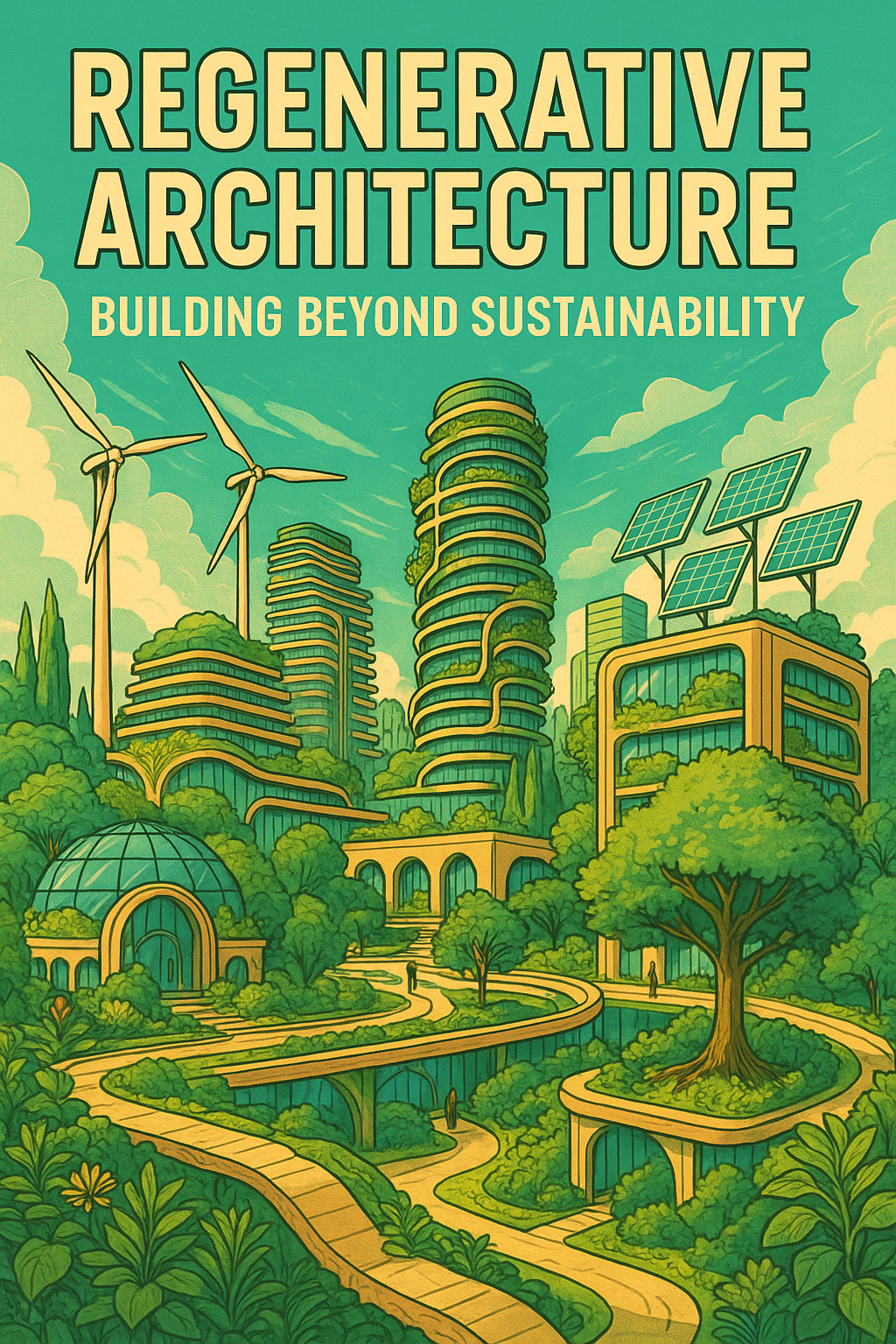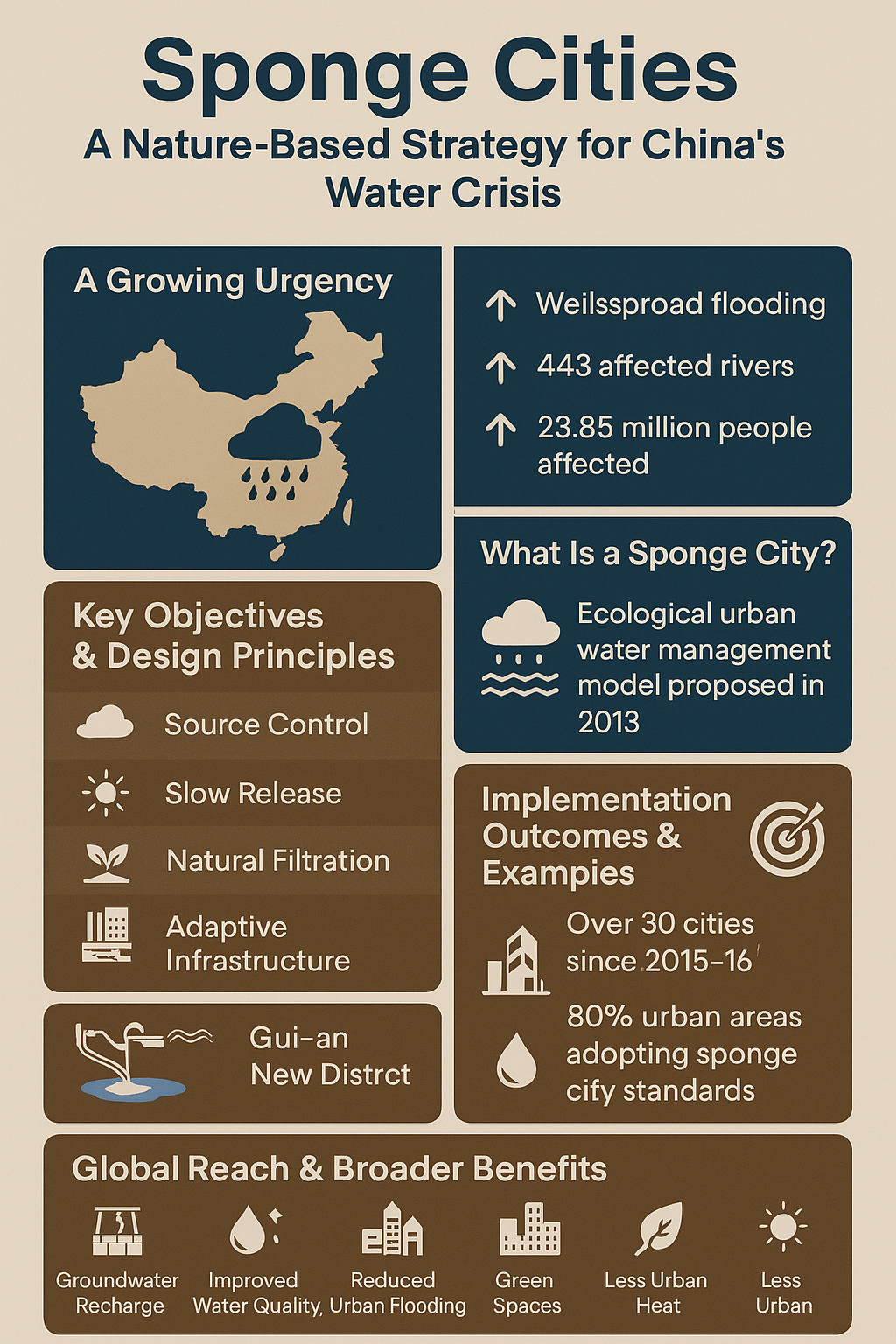Cutting-edge tech latest layer in ‘living architectural community’
In Taos, affordable housing projects often have layers.
The latest development project in the Town of Taos’ Chamisa Verde subdivision is taking that literally: A 3D construction printer, the first in the state, arrived in late June to print seven homes in Phase 1 of a long-awaited affordable housing project.
The town’s $1.3 million pilot project will construct three 900-square-foot, two-bedroom homes and four 1,000-square-foot, three-bedroom homes. Another phase is in the works for 64 additional houses. All are “designed with affordability, energy efficiency, and long-term sustainability at the forefront,” according to a press release from the Town of Taos.
Jonah Reynolds’ Pangea Biotecture, an architectural design and construction firm focused on sustainability, is contracted to develop the pilot project.
Open only to people who have resided in Taos County at least five years, the affordable housing project aims to forge a pathway to homeownership for “veterans, law enforcement officers, first responders, single parents — people who make up our community” according to Charly Burnette, Pangea build division lead.
Bill Evans, town planning director, said most affordable housing projects he’s seen are workforce housing or rentals, whereas Chamisa Verde will offer “truly, truly affordable homeownership.”
The pilot project broke ground Monday (July 7) and is slated to begin printing within the month.
Watch the Construction Project Live.
3D printer
Behind the Youth and Family Center, the printer towers over dirt lots like scaffolding for a small concert stage.
From Denmark, the COBOD BOD2 is considered the fastest construction printer on the market. It can lay about 1,000 square feet in a week, requiring an additional day-and-a-half to move and reconstruct. It runs on biodiesel, which Pangea is sourcing from local restaurants, and operates with three to four people.
With each house slated for construction in under 10 days, Reynolds estimates the project will wrap within the year, and “hopefully sooner.”
Mark Goldman said the printer is the latest iteration of Taos’ tradition of cutting-edge, sustainable architecture, from Taos Pueblo to Earthships.
An architect and contractor, Goldman has prioritized sustainable and affordable housing throughout his career. He chaired the construction technology department at UNM-Taos and piloted their 3D printing program.
“This valley is the most fascinating, comprehensive living architectural community in the United States,” he said, hailing Taos Pueblo as “green building at its best.” He said the latest Chamisa Verde project is in line with Taos’ building legacy.
“This is just the most exciting project I could think of,” he said.
Compared to conventional frame structures, the printed houses will be inexpensive, insulative, longlasting and fire resistant.
Each wall will be built in two vertical layers, with the space between filled with hemp or spray foam insulation, providing an R-value of 85, according to Burnette. That surpasses the R13-R21 value called for in Taos for the walls and the R49 to R60 value for roofs, according to Home Depot.
The finished walls will be water sealed on both sides, but not plastered on the outside, retaining their layered look.
“The path of least resistance is usually the right one,” Reynolds said. “So instead of assembling all this wood and labor and fasteners for a stick frame, it’s a printer; and instead of nine or 14 people, it’s two people. And it just prints. So it’s way simpler and way easier.”
Sustainable housing
With vigas sourced through Raton Mill, concrete mined in-state, hardware purchased from Rio Grande Ace, and all local laborers, the project is homegrown.
“It’s our people operating every aspect,” Burnette said. “Our crew is Taos. We all love it here; this is home.”
The seven pilot homes will feature passive solar design.
“That’s really when you can make a building affordable, is the utility bills and the stress and anxiety that goes with that,” Reynolds said. The homes will also come with energy-efficient minisplits for heating and cooling.
The houses will be printed out of concrete, which contains cement; Globally, cement is the building material that contributes most to greenhouse gas emissions.
“Fast and [in]expensive, yes. Sustainable, no,” Goldman said.
But with deadlines and a budget, cement means building reliably and quickly, Burnette said.
Reynolds acknowledged the “devastating state of cement mines,” noting: “Concrete is absolutely temporary.”
Future Pangea projects plan to cut down on cement by incorporating geopolymers — a cement alternative — and site-sourced earth, or by experimenting with pumicecrete.
And Reynolds expects the buildings to last generations. Concrete is structurally sound and requires less upkeep than organic matter like straw bale and adobe, he said, making the tradeoff worth it.
Builders regionally have been experimenting with 3D printing construction tech. University of New Mexico student Daiquiri Zozaya has researched 3D printing with local soil, and Ronald Rael in the San Luis Valley 3D prints with adobe. UNM researchers are developing bendable concrete to reinforce 3D printed buildings.
Pangea plans to build Phase 2 entirely off-grid with water catchment, solar panels and water recycling systems, and at higher density, building up to 90 units across 70 lots.
Affordable housing
Chamisa Verde features some homes built years ago, but has been stalled for some time. Then state made the town an offer it couldn’t refuse in early 2024: $1 million to break ground on at least five homes costing $190 per square-foot — in three months time. Officials later extended the deadline, and the town has built up an affordable housing fund to boot.
“In building, you say there’s quality, cost and speed. You have to pick two of the three, and that’s wanting all three,” Goldman said.
Reynolds said private building projects are more nimble, while working with public funds means more red tape.
The tight budget will keep the finished houses affordable: $172,000 and $190,000 for the two- and three-bedroom models, respectively.
In Taos, Goldman estimated homes cost $250-300 per square foot to build and go up to $700 for luxury custom homes. The 3D printer significantly cuts labor costs, which he estimated comprise 70 percent of a project’s price tag.
Affordable housing projects can be cumbersome, Goldman said. Building and real estate industries respond to profits, and there’s little profit in smaller projects.
“As a registered architect and a licensed commercial leader, I find it way more difficult to do a good, dignified, affordable house than it is to do a luxury house,” he said. But with the cost of housing outpacing income, something needs to give.
“Housing is a really big deal, and it’s worse and worse as each year, every day that goes by,” Reynolds said.
Locals earning about $60,000 a year could afford Chamisa Verde’s projected home prices of $172,000 and $190,000.
Evans said price tags will be affordable to earners making 120 percent of the area median income.
Taos Countians’ average income is $40,000, according to the U.S. Census Bureau, while a home in the county costs $445,000 on average, according to Zillow.
The town will provide a $40,000 “soft mortgage” to first-time buyers to cover land and hookup costs, which would return to the municipality if the home is sold. Bill Evans, town planning director, said the homes would easily get $350,000 on the market.
“They’re gonna be beautiful,” he said.
Anticipating more applicants than homes, Evans said a lottery will determine buyers.
Reynolds painted an all-too familiar picture: friends leaving town because they can’t afford housing, or rent-burdened single moms living out of RVs.
Pangea often deploys to disaster-relief zones, building houses in mere days for people in dire need, without charging fees for architectural plans — a service the firm extended to Chamisa Verde.
“This is our home, and it’s affordable housing. It is a disaster,” Reynolds said.
“So this printer, it’s going to change things,” he added. “Probably more than the Internet has changed society.”
Reynolds praised the town for making the project happen, and local businesses for their collaboration. Burnette said the project is a matter of the right people coming together at the right time.

















Leave A Comment